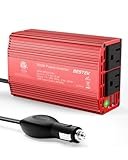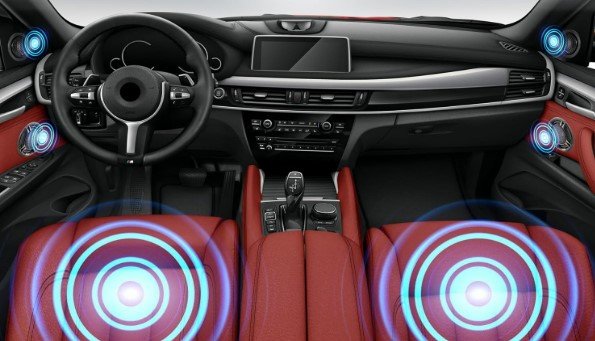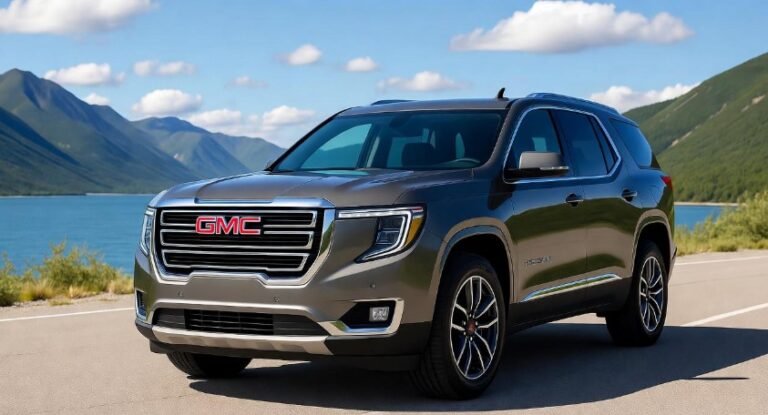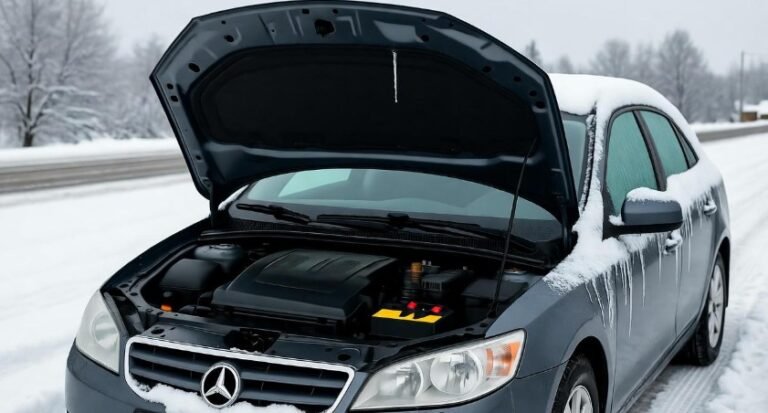How Long Can a Car Sit in Cold Weather: Essential Tips for Safe Storage

Winter brings cozy sweaters, hot coffee, and snow-covered roads — but it also brings a serious question for car owners: How long can a car sit in cold weather without damage?
If you live in a region where the mercury drops below freezing, you’ve probably worried about your vehicle just sitting there in the driveway, collecting frost. I’ve been there too — one winter, I left my old sedan untouched for two weeks in the cold, and when I tried to start it, nothing. The engine groaned, the battery gasped, and I realized that cold weather can quietly eat away at your car’s health.
In this guide, we’ll dive deep into how long your car can safely sit in cold weather, what happens when it’s left idle too long, and the essential tips for safe winter storage. Whether you park your car for a few days or a few weeks, understanding how the cold affects it will save you from future frustration and costly repairs.
Understanding the Impact of Cold Weather on Cars
Cold weather doesn’t just freeze your fingers — it freezes your car’s spirit too. Every part of your vehicle feels the chill in one way or another. From the battery struggling to deliver power to the oil thickening like old syrup, winter can test your car’s limits.
Here’s what really happens under the hood when temperatures drop:
-
Battery Weakness: Batteries lose about 30–50% of their capacity in freezing temperatures. The cold slows the chemical reaction inside, making it harder to crank the engine.
-
Thickened Engine Oil: The colder it gets, the thicker your oil becomes. This makes it difficult for oil to circulate quickly, leaving vital components unprotected.
-
Frozen Fuel Lines: If moisture sneaks into the fuel system, it can freeze, clogging lines and injectors.
-
Tire Pressure Drop: Air contracts in the cold, reducing tire pressure and affecting traction and safety.
-
Condensation Buildup: Cold air and short drives can create moisture buildup inside the exhaust or oil system, leading to corrosion.
In simple terms — winter slows everything down, from your morning routine to your car’s internal workings. That’s why regular checks are more crucial than ever.
How Long Can a Car Sit in Cold Weather Without Problems?
Now comes the big question — how long can you let your car sit in the cold before it starts causing trouble?
If your car is in good condition, with a healthy battery and clean oil, it can typically sit for two to three weeks in cold weather before issues start appearing. But that’s only if everything is well-maintained. In harsher conditions or with older batteries, problems might start showing up within a few days.
Experts often recommend starting your car every two to three days during freezing weather. This short routine helps:
-
Keep the battery charged.
-
Allow the engine oil to circulate.
-
Warm up the fluids and seals, preventing them from hardening or cracking.
However, there’s a small catch. Simply starting the car and letting it idle for five minutes isn’t enough. You should drive it for at least 10–15 minutes to reach normal operating temperature. This ensures that condensation inside the engine burns off and that fluids move properly through the system.
Think of your car like a person — you can’t stay warm by standing still. You need to move around a bit.
Why the Battery Is the First to Suffer
If there’s one part of your car that hates the cold, it’s the battery. Batteries rely on chemical reactions to generate power, and cold weather slows those reactions significantly.
At 32°F (0°C), your battery loses about 35% of its strength. At 0°F (-18°C), it loses about 60%. That means even a relatively new battery might struggle if your car sits untouched for too long.
When I left my car in freezing temperatures a few winters ago, I thought a simple jump-start would fix everything. I was wrong. The battery had completely drained, and even after recharging, it never performed the same. Cold weather not only drains batteries but also shortens their lifespan.
To keep your battery safe:
-
Use a trickle charger or battery maintainer. These devices keep the battery at an optimal charge level even when the car isn’t driven.
-
Clean the terminals. Corrosion buildup can reduce efficiency, especially in cold weather.
-
Park indoors whenever possible, even in an unheated garage, as it offers some insulation from extreme cold.
If your battery is over three years old, get it tested before winter hits. That small step can save you from a freezing morning with a dead car.
The Silent Strain on Engine Oil
When temperatures plummet, engine oil behaves very differently. Think of it like honey on a cold day — thick, sluggish, and slow to move. That’s exactly what happens inside your engine.
Cold weather thickens oil, which delays its ability to lubricate moving parts when you start your car. During those first few seconds, your engine experiences higher friction, which can wear down components over time.
If your car sits idle for weeks in freezing weather, that thick oil settles at the bottom of the engine, leaving metal parts exposed. When you finally start the car, the sudden surge of pressure can cause premature wear.
To protect your engine:
-
Use winter-grade oil. Check your owner’s manual for the recommended viscosity for cold climates (usually 0W-20 or 5W-30).
-
Warm up the car properly. Give it a few minutes to circulate oil before driving, especially on extremely cold mornings.
-
Change oil before winter. Old oil contains moisture and contaminants that can freeze and thicken even faster.
Proper oil maintenance in winter isn’t just about performance — it’s about giving your car a fighting chance against nature.
Fuel System and Moisture Problems
When a car sits in cold weather for too long, the fuel system can develop issues you won’t notice until it’s too late. The main culprit? Moisture.
Tiny amounts of water vapor can find their way into your fuel tank. When temperatures drop, that moisture condenses and may freeze inside fuel lines or filters, blocking the flow of fuel. This can prevent your car from starting or cause it to stall.
To prevent these problems:
-
Keep your gas tank at least half full. A fuller tank reduces air space, which limits condensation.
-
Use a fuel stabilizer if you’re storing your car for more than a month. It prevents fuel degradation and moisture buildup.
-
Add a fuel-line antifreeze product (isopropyl alcohol-based) during extremely cold spells.
If you’re parking your car for the entire winter, consider running the engine for a short drive once a week. This helps burn off moisture and keeps the fuel pump and injectors lubricated.
Tires, Fluids, and Hidden Winter Risks
Your tires might look fine sitting in the snow, but cold weather is constantly at work on them too. Air contracts in freezing temperatures, which means tire pressure drops roughly 1 PSI for every 10°F decrease. Underinflated tires wear out faster and provide less traction — something you don’t want on icy roads.
Make sure to:
-
Check tire pressure weekly.
-
Inflate to manufacturer-recommended levels.
-
Inspect for cracks or flat spots if your car sits for a long period.
And don’t forget about other fluids. Coolant, brake fluid, and windshield washer fluid all need attention before the temperature drops. Frozen washer fluid or low antifreeze levels can lead to serious damage or safety issues.
Here’s a quick table for winter readiness:
| Fluid Type | What to Check | Winter Tip |
|---|---|---|
| Engine Oil | Viscosity | Use synthetic or low-viscosity oil |
| Coolant | Antifreeze ratio | Ensure 50/50 mix for freeze protection |
| Brake Fluid | Level & clarity | Replace if cloudy or old |
| Windshield Fluid | Freeze resistance | Use winter-grade fluid |
| Fuel | Moisture | Keep tank at least half full |
Taking these small steps before winter hits ensures your car stays healthy, even if it sits for extended periods.
Essential Precautions for Storing Your Car in Cold Weather
Storing a car safely during winter isn’t just about parking it somewhere and hoping for the best. There are several practical precautions that can protect your vehicle from the cold while keeping it ready for action.
First and foremost, battery care is essential. As we discussed, cold weather can sap your battery’s power quickly. Using a trickle charger or battery maintainer ensures that your battery stays fully charged, even if the car sits for weeks. These devices provide a slow, steady charge, preventing drain and extending battery life.
Next, think about antifreeze levels. Your cooling system is the unsung hero of winter protection. Without the right amount of antifreeze, water in the system can freeze, expand, and crack engine components. Make sure to check the coolant mixture and top it up with a 50/50 blend of antifreeze and water for maximum protection.
If you live in an extremely cold area, a block heater can be a game-changer. By warming the engine block before starting, a block heater makes the car easier to start, reduces wear on engine components, and ensures the oil flows more freely. Plug it in a few hours before you plan to start your car, and you’ll notice a smoother, safer ignition.
Finally, don’t forget yourself. Starting a car in the middle of a freezing morning can be uncomfortable. Dress warmly, and keep gloves and boots handy. It might take several minutes for the heater to blow warm air, so patience is key. Think of it as giving both you and your car a gentle wake-up in the cold.
Safe Parking and Storage Tips
Where you park your car matters just as much as how often you start it. If possible, indoor storage such as a garage provides the best protection against snow, ice, and extreme cold. A garage shields your car from frost accumulation and prevents ice from forming on seals and glass.
If an indoor garage isn’t available, consider a high-quality car cover. A weather-resistant cover protects the paint, prevents snow buildup, and reduces ice formation on windows. Make sure the cover fits snugly, allowing air circulation to prevent moisture from being trapped under it, which could cause rust.
Another tip is to avoid parking on grass or soil. Moisture from the ground can accelerate corrosion, especially when temperatures fluctuate. Concrete or asphalt driveways are ideal, as they reduce the risk of rust forming on the undercarriage.
Lastly, think about short weekly drives. Even if you store your car for weeks, taking it for a 10–15 minute drive once a week keeps fluids circulating, charges the battery, and prevents flat spots on tires. It’s a simple step that can prevent big headaches later.
Using a Block Heater and Other Winter Devices
For car owners in frigid climates, a block heater is a must-have accessory. Block heaters plug into a standard electrical outlet and gently warm the engine before starting. This reduces engine wear and ensures oil circulates properly from the moment you turn the key.
Some vehicles also benefit from battery warmers, which wrap around your battery to keep it at an optimal temperature. Pairing a battery warmer with a trickle charger can dramatically reduce cold-weather starting problems.
Additionally, consider fuel-line antifreeze additives. These products prevent moisture in the fuel from freezing, protecting fuel lines and injectors from damage. Using a combination of these tools provides peace of mind — your car will be ready to start even on the coldest mornings.
Common Winter Car FAQs
Here are some of the most frequently asked questions regarding cold weather storage:
1. How long can a car sit in cold weather before the battery dies?
A car battery in poor condition can fail after only a few hours in freezing temperatures. A healthy, fully charged battery may last two to three weeks if maintained properly.
2. Can cold weather damage a car’s engine?
Yes. Thickened oil, frozen fluids, and sudden cold starts can put strain on engine components, potentially causing long-term damage if precautions aren’t taken.
3. What temperature is too cold for a car?
Extreme cold below -30°F (-34°C) can severely affect your car’s battery, oil, tires, and overall performance. Vehicles in these temperatures require extra care.
4. How can I protect my car in cold weather?
Use a car cover, park in a garage, maintain battery and fluid levels, apply protective wax, and monitor tire pressure regularly. Short drives help circulate fluids and prevent flat spots.
5. Can I leave my car idle all winter?
Leaving a car idle without precautions is risky. Start and drive it at least once every two to three days, use a battery maintainer, and ensure antifreeze levels are correct.
6. Should I use synthetic oil in winter?
Yes. Synthetic oils remain thinner in low temperatures, circulate quickly, and provide better protection during cold starts.
7. What about tire care in cold weather?
Check tire pressure weekly, keep tires properly inflated, and consider winter tires for areas with heavy snow or ice. Cold weather reduces air pressure, impacting grip and safety.
8. Is it safe to use remote start in winter?
Remote start can warm the engine and cabin, but ensure the vehicle is parked safely, and avoid leaving it running unattended for long periods without circulation or movement.
Bullet Points for Quick Winter Car Care
-
Start and drive your car every 2–3 days.
-
Use a trickle charger for the battery.
-
Ensure antifreeze/coolant levels are correct.
-
Apply winter-grade synthetic oil.
-
Keep the gas tank half full or more to prevent condensation.
-
Consider a block heater in extremely cold regions.
-
Check tire pressure weekly and monitor for flat spots.
-
Use a garage or weather-resistant car cover.
-
Run a short weekly drive to circulate fluids and maintain engine health.
Conclusion: Keeping Your Car Safe in the Cold
The winter months can be harsh, but with the right precautions, your car can survive without drama. Understanding how long a car can sit in cold weather and taking steps like maintaining battery health, using proper fluids, and performing short drives are essential for long-term vehicle care.
Cold weather doesn’t have to mean frozen frustration. By treating your car like a living companion that needs attention, you ensure it starts smoothly, drives safely, and lasts longer. Remember, a little effort now saves a lot of money, stress, and headaches later.
With these strategies, your car can withstand the cold, giving you peace of mind and a reliable ride — even in the harshest winter conditions.






